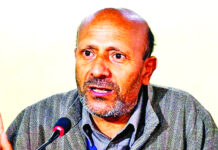Pegging the cost of the COVID-19 lockdown at USD 120 billion (approximately Rs 9 lakh crore) or 4 per cent of the GDP, analysts on Wednesday sharply cut their growth estimates and stressed on the need to announce an economic package. The Reserve Bank of India (RBI), which is scheduled to announce its first bi-monthly policy review on April 3, is set to deliver a deep rate cuts and it should also be assumed that the fiscal deficit targets will be breached, analysts said. Prime Minister Narendra Modi announced a three-week complete lockdown of the country to prevent the spread of the coronavirus infections in the country. The equity markets were in the red early into the trade on Wednesday, down 0.47 per cent. We estimate that the cumulative shutdown cost around USD120 billion or 4 per cent of the gross domestic product (GDP), British brokerage Barclays said in a note, revising down its FY21 growth forecast by 1.7 percentage points to 3.5 per cent. It specified the cost of the three-week nationwide lockdown to be alone at USD 90 billion, which is over and above the lockdowns announced by various states like Maharashtra earlier. They also said that the RBI is most likely to go for a 0.65 per cent rate cut in the April review and will slash interest rates further by 1 per cent during the course of the year. Domestic brokerage Emkay congratulated policymakers for acting earlier than other countries, but rued that there is not much to cushion the economic impact. The Indian government has so far been largely silent on the economic impact from the lockdown, leave alone any measures to cushion the hit, it said. The unorganised sector, which is already reeling under the twin impact of demonetisation and goods and services tax (GST), will be pushed to the brink because of these measures, Emkay warned. It suggested soft loans to smaller businesses, loan restructuring and cash transfers as the possible tools the government can adopt as part of the economic package. Edelweiss said, India so far lags peers in a policy response to the crisis, which has been limited to liquidity support, installing a task force and some spending measures by states. India needs a lot more, it said, pointing out that there’s plenty of monetary room but little option on the fiscal front. Finance Minister Nirmala Sitharaman, while announcing some measures to help the economy on Tuesday, had hinted that an economic aid package is in the making. Analysts at Barclays said the government will most likely invoke the cause for natural calamities under the fiscal prudence framework in FY21 and estimated the fiscal deficit to come at 5 per cent of GDP versus the 3.5 per cent budget target.

Dogra Herald is the media of J & K, breaking language and geographical barriers, connecting J & K to the rest of India.
0191 245 4946
info@dograherald.com
Latest articles
Commissioner State Taxes Deptt holds interaction with Trade & Industry associations
Listens issues & demands of representatives of various organizations
DOGRA HERALD BUREAUSRINAGAR, Feb 2The Commissioner State Taxes Department, P...
CS Dulloo launches competitions on MyGov Portal to mark ‘International Yoga Day’
DOGRA HERALD BUREAUSRINAGAR, June 14Chief Secretary, Atal Dulloo, today launched several online competitions for the citizens of Jammu and Kashmir on MyGov...
357 new COVID-19 cases in J&K, 10 deaths
iamjkstarr - 0
Jammu and Kashmir registered 357 more novel coronavirus cases on Sunday, taking the tally to 10,513, while the toll rose to 179 with 10 more...


























